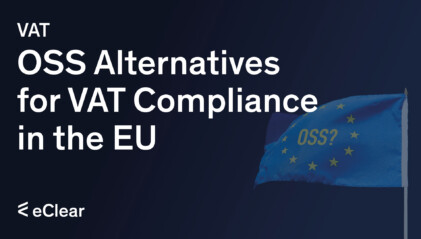Navigating the complexities of Goods and Services Tax (GST), or Value Added Tax (VAT) in the EU, is vital for businesses engaged in cross-border commerce. This tax is a crucial government revenue source and simplifies global tax structures. Our comprehensive guide covers everything from the basics and importance of GST to its implementation, challenges, and frequently asked questions in the context of EU cross-border activities.
What is the GST?
In the European Union, Value Added Tax (VAT) is a general, broadly based consumption tax assessed on the value added to goods and services. It applies to almost all goods and services bought and sold for use or consumption within the EU. The tax is designed to be neutral and collected fractionally at each stage of production and distribution. This ensures that businesses can deduct the VAT they have paid on their purchases from the VAT they collect from consumers, making the system fair and transparent. The standard VAT rate in the EU must be at least 15%, while the reduced rate must be at least 5%, although these rates can vary between member states and specific types of products.
The importance of GST for cross-border trade in the EU
Benefits for Governments
The Goods and Services Tax is a significant revenue source for governments. According to the OECD, the spread of VAT/GST has been the most crucial development in taxation over the last half-century. It’s a general tax that applies to all commercial activities, including producing and distributing goods and services.
Revenue Stream for Governments
For governments, VAT serves as a significant source of revenue. It’s a consumption tax, ultimately borne by the final consumer, making it a stable and less volatile income. The tax is collected fractionally at each stage of production and distribution, ensuring a steady cash flow to the treasury.
Ensuring a Competitive Single Market
The system is designed to be neutral and transparent, allowing for the exact amount of tax to be rebated at the point of export. This is crucial for maintaining a competitive single market in Europe.
Reducing Administrative Burden
This mechanism avoids double taxation and makes the system fair and transparent. Moreover, digital platforms and automated record-keeping systems are increasingly used to manage VAT compliance, reducing the administrative burden and risk of errors.
Navigating the Challenges and Solutions of GST in EU Cross-Border Commerce
Common Issues Businesses Face in the EU
Complexity of Rates: VAT rates vary between EU Member States, making it challenging to comply across borders. Businesses often need help tracking the rates applicable to different goods and services.
Double Taxation: Due to the lack of harmonisation of VAT systems in EU countries, businesses need to be particularly vigilant. The risk of double taxation for goods or services in the supply chain is frequent.
Administrative Burden: Due to the lack of harmonisation of VAT systems in EU countries, businesses must be particularly vigilant. The risk of double taxation for goods or services in the supply chain is frequent.
How to Overcome These Challenges
Utilise Digital Platforms: Use digital platforms that offer real-time VAT rate updates and EU-specific compliance checks.
Seek Expert Advice: Contact tax experts or advisors specialising in EU VAT rules. They can help you navigate the complexities of the different tax rates, comply fully with the rules and optimise your tax liabilities.
Automate Compliance: Use software solutions that automate the documentation and filing process to reduce administrative burden.
0% VAT Tax-free sales into all EU-27

GST and VAT around the World
As of 2023, approximately 176 countries have adopted GST or VAT, marking it as one of the most significant developments in taxation over the last half-century. These cornerstone tax systems have rapidly expanded in an increasingly globalised economy, impacting consumers and businesses. This overview offers a snapshot of how GST and VAT are implemented worldwide, spotlighting key countries across continents for a comprehensive global view.
| North America | Canada | 1991 | Goods and Services Tax (GST) |
| Mexico | 1980 | Impuesto al Valor Agregado (IVA) | |
| United States | N/A | State-level Sales Taxes | |
| Honduras | 1964 | Impuesto Sobre Ventas (ISV) | |
| Nicaragua | 1975 | Impuesto al Valor Agregado (IVA) | |
| South America | Argentina | 1974 | Impuesto al Valor Agregado (IVA) |
| Brazil | 1964 | Impuesto sobre Circulação de Mercadorias e Serviços (ICMS) | |
| Chile | 1975 | Impuesto al Valor Agregado (IVA) | |
| Peru | 1991 | Impuesto General a las Ventas (IGV) | |
| Colombia | 1983 | Impuesto al Valor Agregado (IVA) | |
| Europe | Germany | 1968 | Mehrwertsteuer (MwSt) |
| United Kingdom | 1973 | Value Added Tax (VAT) | |
| France | 1968 | Taxe sur la Valeur Ajoutée (TVA) | |
| Italy | 1973 | Imposta sul Valore Aggiunto (IVA) | |
| Spain | 1986 | Impuesto sobre el Valor Añadido (IVA) | |
| Asia | India | 2017 | Goods and Services Tax (GST) |
| Japan | 1989 | Shōhizei | |
| China | 1994 | Yīngyè Shuì | |
| South Korea | 1977 | Bu-ga-se | |
| Indonesia | 1985 | Pajak Pertambahan Nilai (PPN) | |
| Africa | South Africa | 1991 | Value Added Tax (VAT) |
| Nigeria | 1994 | Value Added Tax (VAT) | |
| Kenya | 1990 | Value Added Tax (VAT) | |
| Egypt | 2017 | Qīma Mazāda | |
| Ghana | 1998 | Value Added Tax (VAT) | |
| Australia and Oceania | Australia | 2000 | Goods and Services Tax (GST) |
| New Zealand | 1986 | Goods and Services Tax (GST) | |
| Fiji | 1992 | Value Added Tax (VAT) | |
| Samoa | 1994 | Aoga Faasologa | |
| Tonga | 2005 | Fakatau Fakatau |






